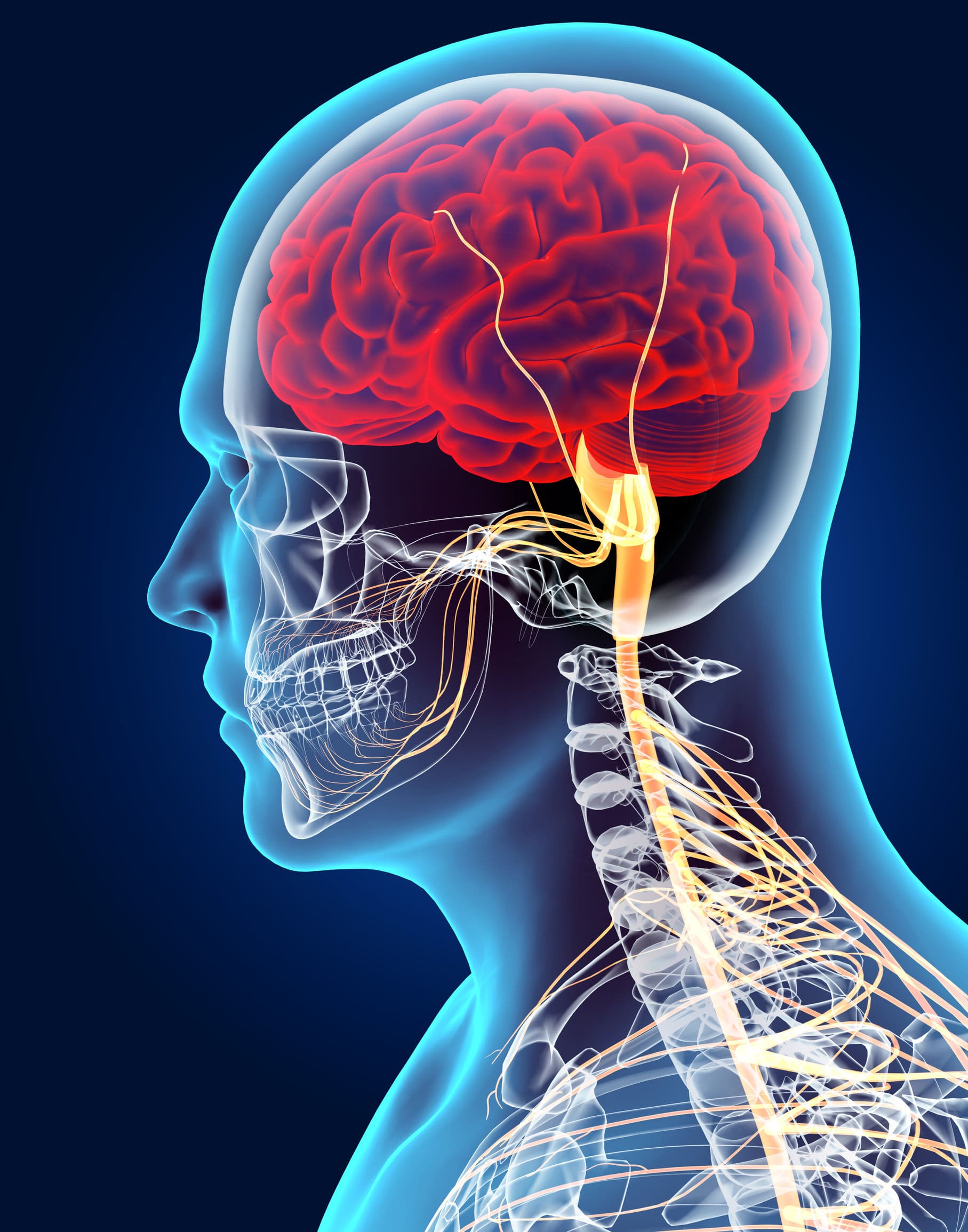In this post
As we have already touched upon the central nervous system and what it does, now is a good time to go a little further into how the CNS works. The central nervous system uses nerve cells which have the biological name of neurons. These neurons have impulses that travel up and down them that cause a rapid response. Once a stimulus is picked up by a receptor, a signal is sent down sensory neurons directly to the CNS so that a suitable response can be formulated. Some other nerves contain motor neurons. These transmit impulses to muscles around the body. Neurons could contain sensory neurons, motor neurons or both.
Motor neurons
A motor neuron has a cell body at one end of the fibre which is within the CNS. This cell body has dendrons which are fine extensions made of cytoplasm. These dendrons have even smaller extensions on them known as dendrites. One of the dendrons coming from the motor neuron is much longer than the rest as this connects to the effector organ and is called an axon. At the end of the axon there are lots of tiny nerve endings that connect to muscles to pass on signals. The axon is covered in a sheath that is made from a fatty material called myelin. This myelin is used to protect the axon and insulate it, preventing short circuits with other axons.
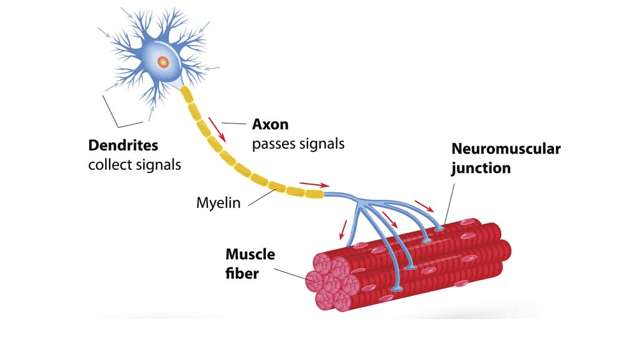
Sensory neurons
Sensory neurons work in a very similar way to motor neurons and have the same parts making up the neuron itself. However, instead of carrying a signal to an effector, a sensory neuron carries a signal from your body to the CNS. This distinction means that sensory neurons are responsible for letting the brain and CNS know of any changes in the body. Then motor neurons pass on the message of what to alter to your muscles once the CNS has processed information gathered from sensory neurons. There are very few physical differences between sensory and motor neurons. They each have the same parts such as dendrites, an axon and myelin. A sensory neuron does not have its cell body at the end like a motor neuron. Instead, the sensory neuron’s cell body is located in the middle of the neuron. This means that the cell body of a motor neuron is located within the CNS, whereas the body of a sensory neuron is not.
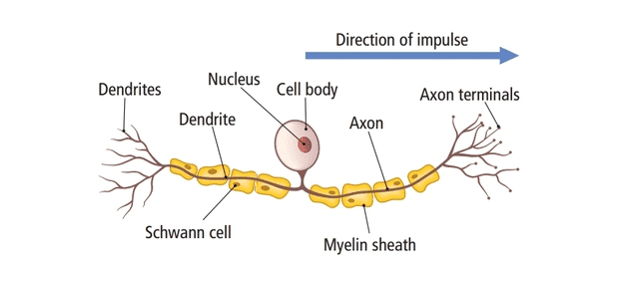
Reflex arcs
When something happens to a human or animal, the body will pick up on this change and then provide a reflex action. The pathway of the information that is used in this reflex can be tracked using a reflex arc. This ‘arc’ is a pathway from the stimulus through the sensory neurone to the CNS, then through the motor neurone to the effector so that an appropriate response can be taken.
At times, the neurons that are in our bodies will need to make a quick response to something that could harm us. For example, if we have a pain in our hand due to accidentally touching a hot surface, our neurones must react very quickly to stop this heat from damaging the cells in the hand. This can be seen as a protective reflex. A reflex arc for this is shown below.
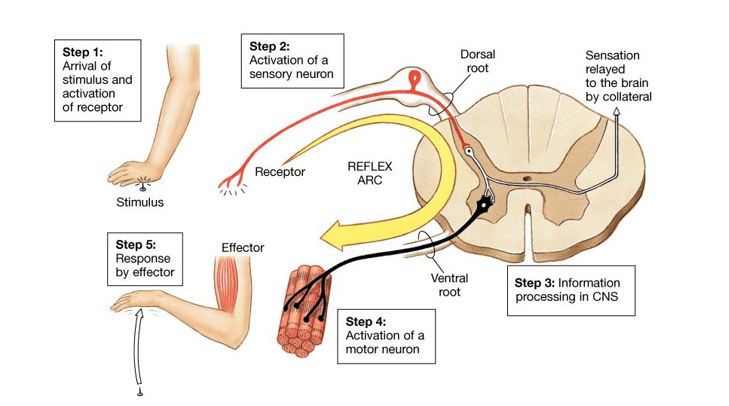
In the above diagram, we see a hand that has been exposed to a stimulus that has caused pain. The activation of a sensory neuron sends a signal into the spinal nerve through what is known as the dorsal root. This information is then processed very quickly in the CNS by a relay neurone (a third type of neurone that only moves messages within the CNS) and sent to a motor neurone through a ventral root. The message is sent to the muscles (the effector) so that they can respond to the danger and move the hand away from the stimulus.
This type of reflex arc is very quick and, if you notice, does not actually travel through the brain. This means that we do not need to actually think about making a response and our neurons take care of this for us so that the reaction is as quick as possible. The brain is still notified of the stimulus though as the pain travels through the spinal cord and to the brain.
Synapses and neurotransmitters
Synapses are essential to the nervous system. As the system is built from billions of individual neurons, they must be linked together to pass electrical messages back and forth. This is where synapses come into play as they are the tiny gaps between nerve cells. Instead of the electrical impulse passing the synapse, chemicals are released that are called neurotransmitters. These neurotransmitters diffuse through the gap and attach to the second neurone to start a new impulse off. This impulse is then continued and the message sent throughout the nervous system.
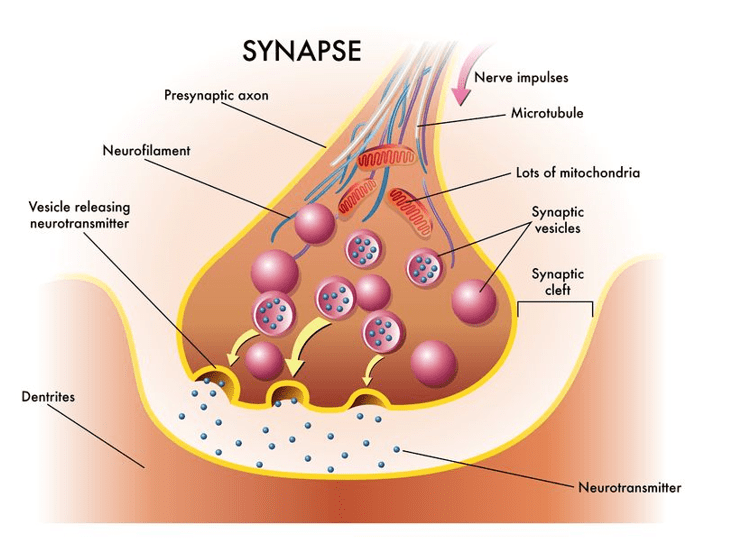
One nerve cell can have thousands of synapses with other nerve cells. In the brain, in particular, there are a huge number of neurones and so there must be a huge number of synapses to allow messages to be relayed to many different areas. Because of this, synapses are an integral part of the nervous system.

